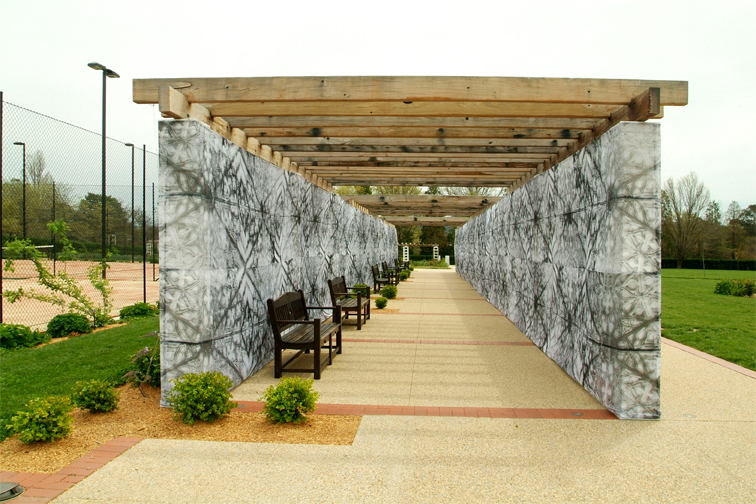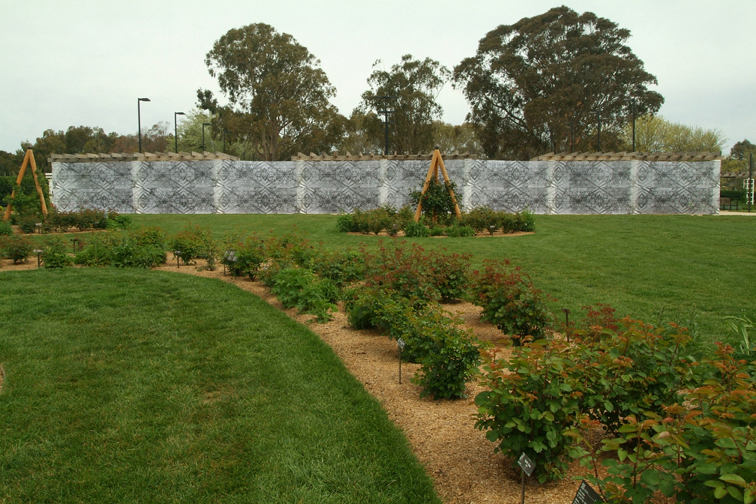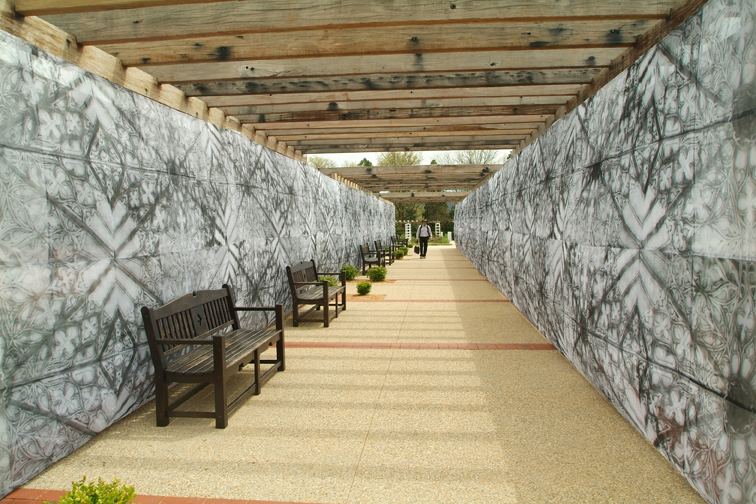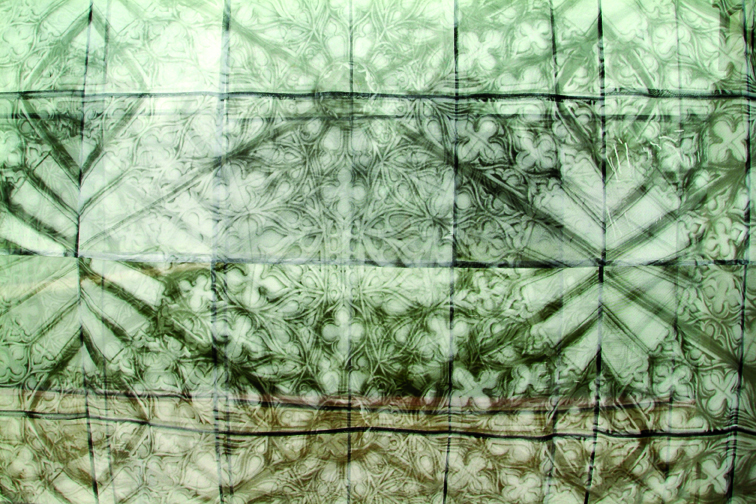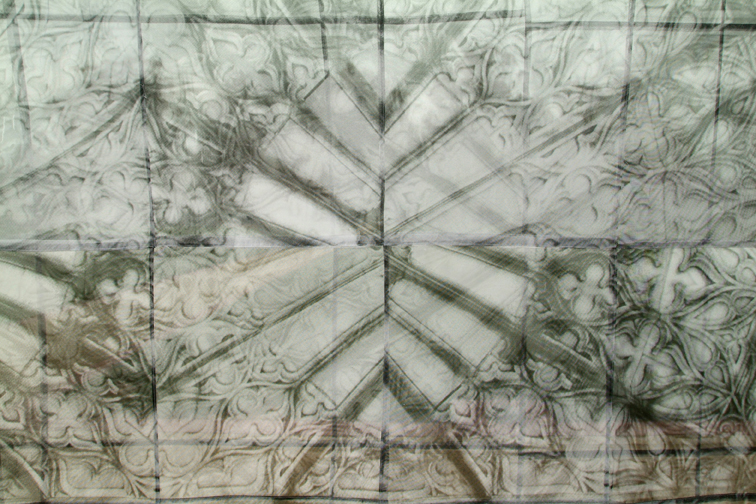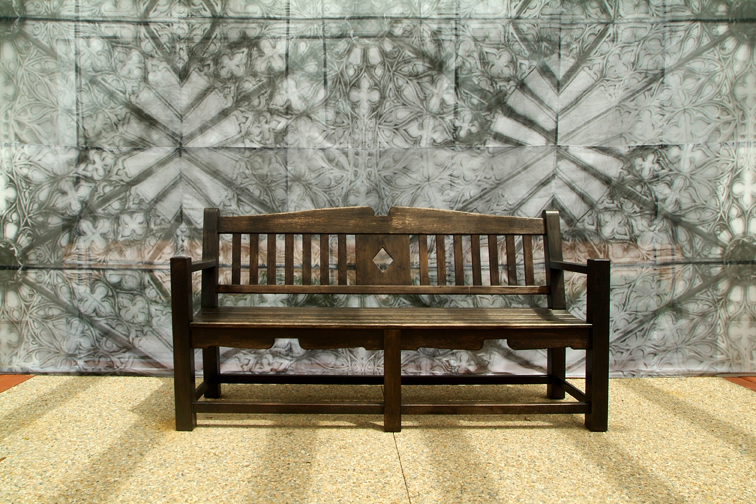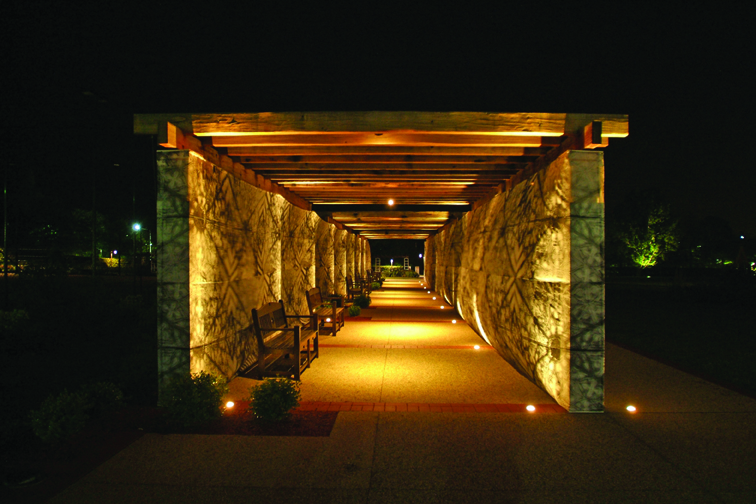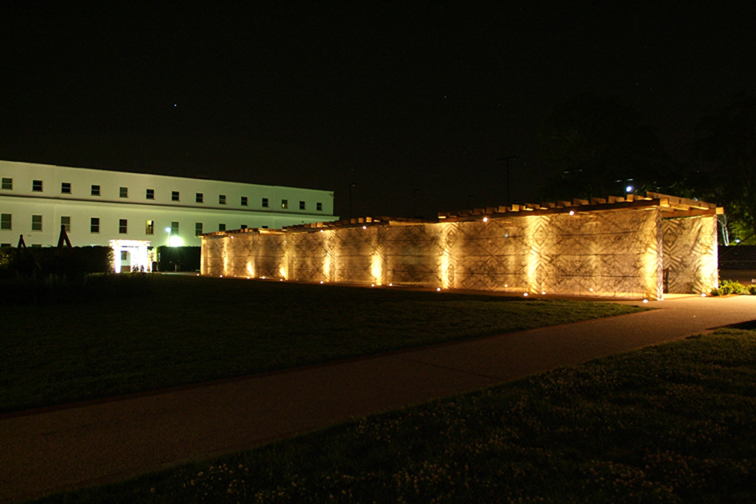Chora, photographic screen print on organza creating a repeated module 7’ hx 9’w, number of modules 144, 250’ x 2 500’ in total.
Exhibition sites: Old Parliament House, Canberra, Australia, Dwell offsite program for CRAFT ACT and International Architecture Biennale 2005-6
canopy, chora and terminal
The emerging ethos of this work is focused on the re-configuring of existing spaces through the creation of temporary, mobile architectural interventions. Using a translucent fabric on which I have imprinted traditional architectural images as my matrix, I am able to superimpose new ephemeral structures within the existing. The modular and mutable nature of the scrim can shift in scale and measure depending on the host site. It envelopes the space and binds to create a unity documenting presence while confirming absence.
Canopy, is a faux ceiling constructed from these modular glyphs. These monumental cloth photographs are like illuminated skins or tracings peeled back from the surface of chosen buildings and then re-positioned, tailored to fit and layered onto the ceiling of each site. In one structure the ceiling was high overhead forcing the viewer to look up. In another installation it was hung low so as to gently touch the head of those entering the space. In addition to subtle changes from site to site, small hand mirrors are made available to viewers encouraging the tracing of intimate, unique reflections and ultimately animating an imagined space. The veiled images, the nomadic re-positioning, and the intimate reflections combine with the existing architecture to become a threshold marking the liminal. They act upon the imagination to contain that which is fleeting making us hyper aware of the ephemeral and the infinite.
chora, an outdoor intervention in the Rose Garden of the Old Parliament House in Canberra, Australia, utilized the three existing large pergolas to create a meditative walkway approx 250’ long. Here the modular glyphs were moved from the ceiling to the walls creating a diaphanous translucent breathing enclosure. The enveloping of the site and the rhythmic pulse created by the wind catching in the fabric metaphorically connects the space to the body. The cloth structure is the skin of the space, the body’s mediator between the inside and the outside between the private interstitial site of contemplation and the public site of the gardens.
The most recent work Terminal, weaves the mimetic cloth through the columns of a derelict train platform for over 500’. It is loosely attached and engages with the wind to find form. The contradiction between materials, the organza and the iron coupled with the residue of abandonment create a tension, a destabilizing effect on our perceptions and expectations of the architectural site. Architecture transforms the history of our relationship to space. By clothing the platform the site is re-activated with a dynamic energy that invokes the chimeras of the imagination.
The transposition that occurs in all these sculptural installations choreographs space and time. We confront an unknown relationship between distinct spaces, real and imagined. The body’s perception is re-sensitized to the architectural meanings and the temporal installation is just an apparition, the afterlife of a visual memory.
